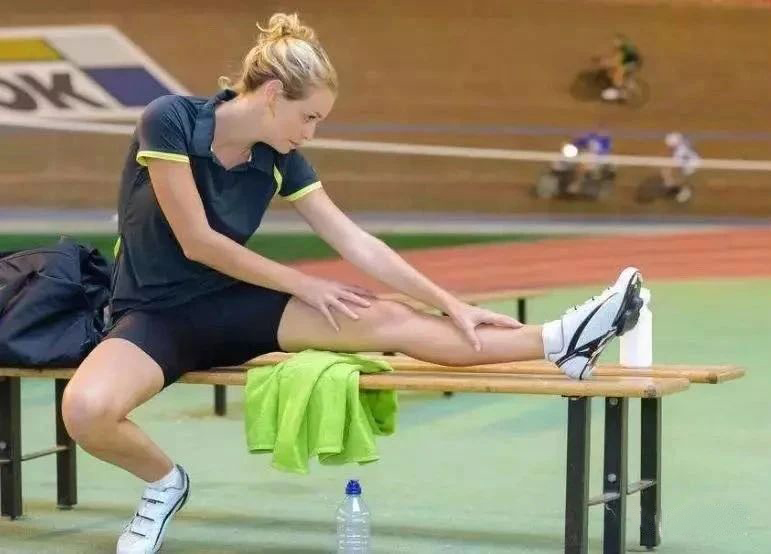

For a long time, static stretching has been considered an indispensable part of athletes’ daily training, and has been used as a means of preparation, performance improvement and injury prevention in all events.
However, in recent years, it has been proposed that the trend of incorporating static stretching into the athlete’s training system is not based on science, but on assumptions.
Stretching is a broad term mainly used to describe passive or active exercises that increase flexibility. Static stretching refers to stretching the muscle to a point where you feel a slight tension and keeping it in this position for a period of time.
Under normal circumstances, we will stretch a single muscle group multiple times, each stretch for at least 30 seconds.
So can static stretching really reduce post-exercise pain, improve exercise performance, and prevent injuries during exercise as everyone believes? Let’s discuss static stretching today, is it useful?

Can static stretching reduce muscle soreness?
At the beginning of exercise, everyone will experience delayed-onset muscle soreness (DOMS) of skeletal muscle after strenuous or unaccustomed exercise.
This pain usually first appears 8 to 24 hours after exercise and lasts for 2 to 5 days or more. We often hear people say that static stretching of muscles before or after exercise can relieve DOMS.
Proponents of this method of preventing and mitigating DOMS include the authors of the widely used textbooks on physical fitness and exercise physiology.
In fact, as early as 1989, High et al. investigated the effect of static stretching on delayed-onset muscle soreness in 62 healthy participants.
The results were compared under experimental (static stretching) and control (non-stretching) conditions. The results showed that, In 5 days after exercise, there was no significant difference between muscle soreness.
Katherine et al. conducted a 30-minute step test on 23 subjects in 1989 to induce delayed-onset muscle soreness in the eccentrically contracted thigh and calf muscles.
The static stretching performed after the test did not relieve the DOMS; the pain after muscle stretching was not relieved, and the pain during the three days after exercise was not generally relieved.
And stretching did not affect the increase in serum creatine kinase levels (a common marker of muscle damage) after exercise.
In a 2010 study by Jamtwedt and others, more than 2,000 people were surveyed and concluded that any form of stretching cannot change delayed-onset muscle soreness.
Herbert et al. also stated in a research report published in 2011 that there is no evidence that static or dynamic stretching before or after exercise can reduce the severity or duration of delayed muscle soreness.
These results contradict the claim that static stretching has the benefit of relieving exercise-induced DOMS.

Static stretching reduces the risk of injury
Most of the research on the relationship between static stretching and injury focuses on chronic, long-term, and degenerative injuries, and most of them use competitive endurance runners or long-term endurance sports soldiers as the research objects.
The chronic injuries studied are tibia Bundle friction, Achilles tendinopathy, and plantar fasciitis.
But most studies have shown that stretching exercises have no effect on the risk of chronic injury for endurance runners.
Witvrouw et al. proposed in 2004 that when participating in a long-distance running event, the lower limbs perform repetitive exercises at the next highest intensity.
This means that the leg tendons are unlikely to require maximum energy absorption and elastic stability for exercise; this applies to all endurance events, including repetitive exercises such as long-distance cycling and swimming.
Pope et al. conducted a 12-week experimental study on 1093 recruits in 1998 and concluded that stretching before exercise would not affect their prevalence of chronic overuse injuries.
But Bonacci et al. said in 2009 that although stretching exercises did not show any ability to reduce the risk of injury for endurance runners, it can be an important tool to maintain and promote the range of motion of the hip, knee, and ankle joints after injury.
In summary, it can be concluded that static stretching does not significantly help in reducing chronic excessive sports injuries.

Can static stretching improve athletic performance?
Many people like to use static stretching before exercise, but now there is ample evidence that static stretching before exercise does not improve your sports performance, but reduces it.
In 2013, L. Simic et al. published a meta-analysis on the effect of static stretching before exercise on maximum muscle performance during exercise.
It was pointed out that static stretching before exercise was negative for maximum muscle performance and explosive power during exercise. Related. And it is proposed to avoid stretching for more than 45 seconds.
Gabriel published literature in 2019 to support L. Simic’s views.
He pointed out that whether it is continuous stretching (a group of five minutes) or intermittent stretching (a group of one minute, a total of five groups, with an interval of 15 seconds) before exercise, it will reduce Explosive performance during exercise.
In 2020, Alessandro et al. published a paper claiming that static stretching for a long period of time (80 seconds per part) before exercise can cause acute non-metabolic fatigue and reduce exercise endurance.
Therefore, static stretching cannot actually be used as a warm-up item. Not only can it not improve your athletic performance, it will decrease it.

Is static stretching really useless?
No, static stretching can lower blood pressure!
Sousa published a paper in 2019 showing that stretching immediately after strength exercise can reduce blood pressure.
The specific mechanism of action is not described too much in the article, but according to the author’s guess, this may be the same as the principle that is usually required not to hold urine before measuring blood pressure.
Due to muscle congestion after strength exercise, muscle tension is too high, resulting in sympathetic nerve excitement and blood pressure.
Elevated, and static stretching immediately after exercise can reduce muscle tension, thereby lowering blood pressure.
However, there are many limitations. Firstly, stretching immediately after strength exercise (if you are a little late, your blood pressure will have returned to normal, it is unnecessary).
Secondly, the study did not analyze the heart variables closely related to blood pressure. , Such as cardiac output, heart rate variability and blood flow, and this study was conducted in subjects with normal blood pressure, so it is impossible to extrapolate the results to other populations, such as those with hypertension.
It can be seen that in fact, the benefits of static stretching are more in assumptions, and real sports cannot actually play a role in propaganda, but even so, many athletes still use static stretching as the main means of warming up or relaxing.
Comments